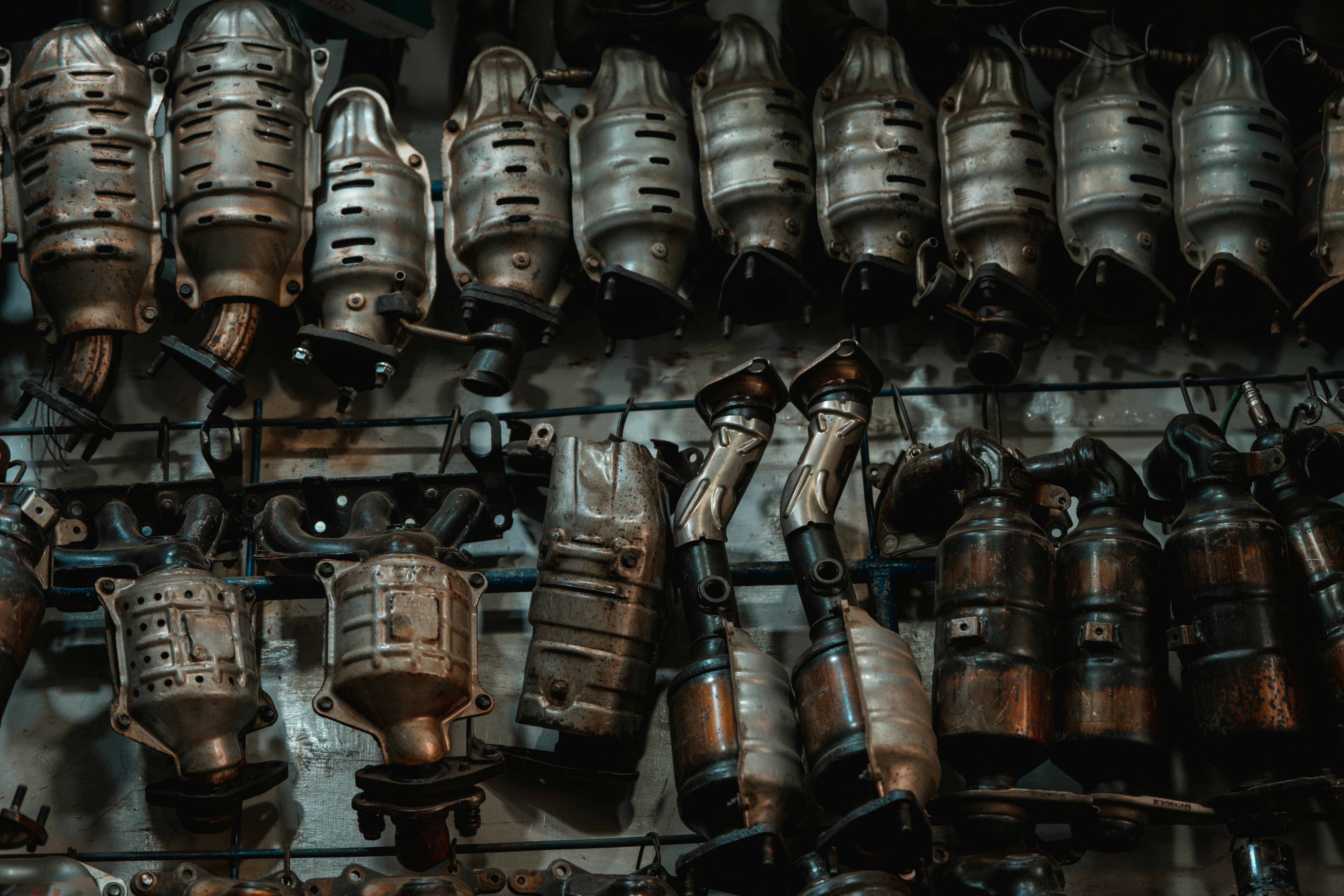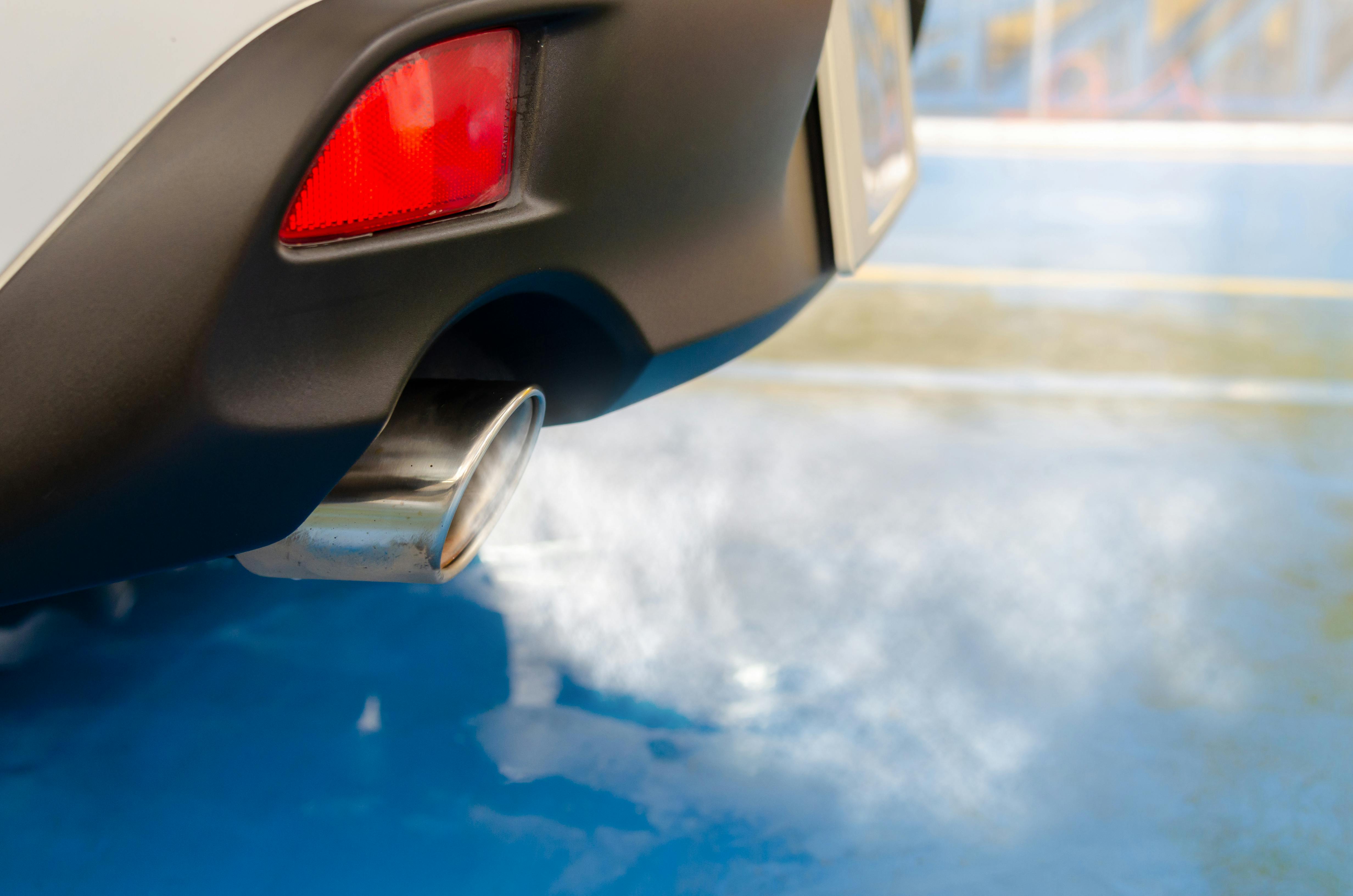Catalytic Converter Theft and Smog Tests in California: Everything You Need to Know
Author
Bahram Najafzadeh
Date Published

In California, a state known for its strict environmental regulations, catalytic converters are more than just a car part—they are a critical component of a vehicle's legal and environmental compliance. Unfortunately, due to the valuable metals they contain, they have become a prime target for thieves. This guide explores the reasons behind this crime wave, its direct impact on your vehicle's smog test, and the steps you can take to protect your car.
The Role of Catalytic Converters in California's Clean Air Efforts
Since 1975, catalytic converters have been mandatory on all gasoline-powered vehicles sold in the United States. Located in the exhaust system between the engine and the muffler, this anti-pollution device contains precious metals—rhodium, platinum, and palladium—that act as catalysts. As exhaust gases pass through, these metals trigger a chemical reaction that converts harmful pollutants like carbon monoxide, hydrocarbons, and nitrogen oxides into less toxic emissions such as water vapor, carbon dioxide, and nitrogen.
Because California's air quality standards are among the highest in the nation, the proper functioning of a catalytic converter is non-negotiable for vehicle registration and a core part of the smog check program.
The Rising Tide of Theft and Its Costly Impact
California has long been at the epicenter of catalytic converter theft. According to data from the National Insurance Crime Bureau (NICB), from 2020 through 2022, California led the nation with the highest number of theft claims. While recent legislation and a drop in metal prices have led to a downward trend in thefts, regions like Southern California's Los Angeles and Orange County still rank among the top spots for this crime.
The motivation for thieves is simple: a high reward for minimal effort. An experienced thief can remove a catalytic converter in just one or two minutes with a reciprocating saw. They can then sell it to unscrupulous recyclers for anywhere from $50 to $250. For the vehicle owner, however, the financial consequences are severe. Replacement costs can range from $1,000 to over $5,000, depending on the vehicle's make and model. This doesn't include the added cost of towing and potential insurance deductibles.
Vehicles at Highest Risk in California
While any car manufactured after 1975 is a potential target, thieves often go after specific vehicles that offer easy access and more valuable converters.
High-Clearance Vehicles: Trucks and SUVs like the Ford F-series are at high risk because their elevated design allows thieves to easily slide underneath without needing a jack.
Toyota Prius (especially 2004-2009 models): The catalytic converters in hybrid vehicles are less frequently used, which means the metals inside are often in better condition and therefore more valuable on the black market.
The Direct Link to Your Smog Test
In California, a smog check is required every two years for most vehicles. A stolen or damaged catalytic converter will result in an automatic and immediate smog test failure. When this happens, your vehicle will be extremely loud and will emit a foul smell, and it will be impossible to pass the emissions test because the core component that converts harmful pollutants is missing.
If your converter is stolen, you cannot legally drive the vehicle until you have a California Air Resources Board (CARB) approved replacement installed and a passing smog check is on file with the DMV. This creates a stressful situation for vehicle owners, forcing them to deal with costly repairs before they can legally use their car again.
California's Proactive Response: New Laws to Combat Theft
In recent years, California has taken significant legislative steps to combat catalytic converter theft. A series of new laws went into effect on January 1, 2024, aimed at making it harder for thieves to sell stolen parts.
AB 1519: This law makes it illegal to remove or alter a Vehicle Identification Number (VIN) marking on a catalytic converter. It also makes it a crime to possess three or more catalytic converters with their VINs removed.
SB 55: This law requires licensed automobile dealers and retailers to engrave or etch a vehicle's VIN onto its catalytic converter before selling a new or used truck.
AB 641: This law cracks down on the black market by creating criminal penalties for individuals found in possession of nine or more catalytic converters, redefining them as "automobile dismantlers."
These laws, coupled with a drop in the price of precious metals, have led to a noticeable decrease in thefts in California, but the problem is far from solved.
How to Protect Your Vehicle and Ensure Smog Compliance
Being proactive is the best defense against catalytic converter theft. Here are several strategies to protect your vehicle and ensure you can pass your next smog check without hassle:
Install a Protective Device: A catalytic converter shield or cage is a highly effective deterrent. These are metal plates or steel cages that are bolted or welded to your vehicle's frame, making it much more difficult and time-consuming for a thief to remove the converter.
Engrave Your VIN: Have your vehicle's VIN or license plate number permanently engraved or etched onto your catalytic converter. This makes the part traceable and less attractive to recyclers. Many law enforcement agencies and auto shops offer this service for free or at a low cost.
Park Smart: Whenever possible, park your vehicle in a locked garage. When parking on the street, choose a well-lit area with high foot traffic. If you have a truck or SUV, try to park with the exhaust side against a curb or wall to limit a thief's access.
Install a Sensitive Alarm: Many car alarms can be adjusted to be more sensitive to vibration. A thief cutting through the exhaust pipe could trigger the alarm, scaring them away.
By understanding the risks and taking these preventative measures, you not only protect your valuable car parts but also ensure your vehicle remains a compliant and reliable part of California's clean air solution.

Pass your smog test with ease. Learn 8 essential tips, from warming up your engine to checking the "Check Engine" light, for a successful inspection.

Learn what to do if your car fails a smog check. This guide covers how to understand your report, make repairs, and retest to get back on the road.